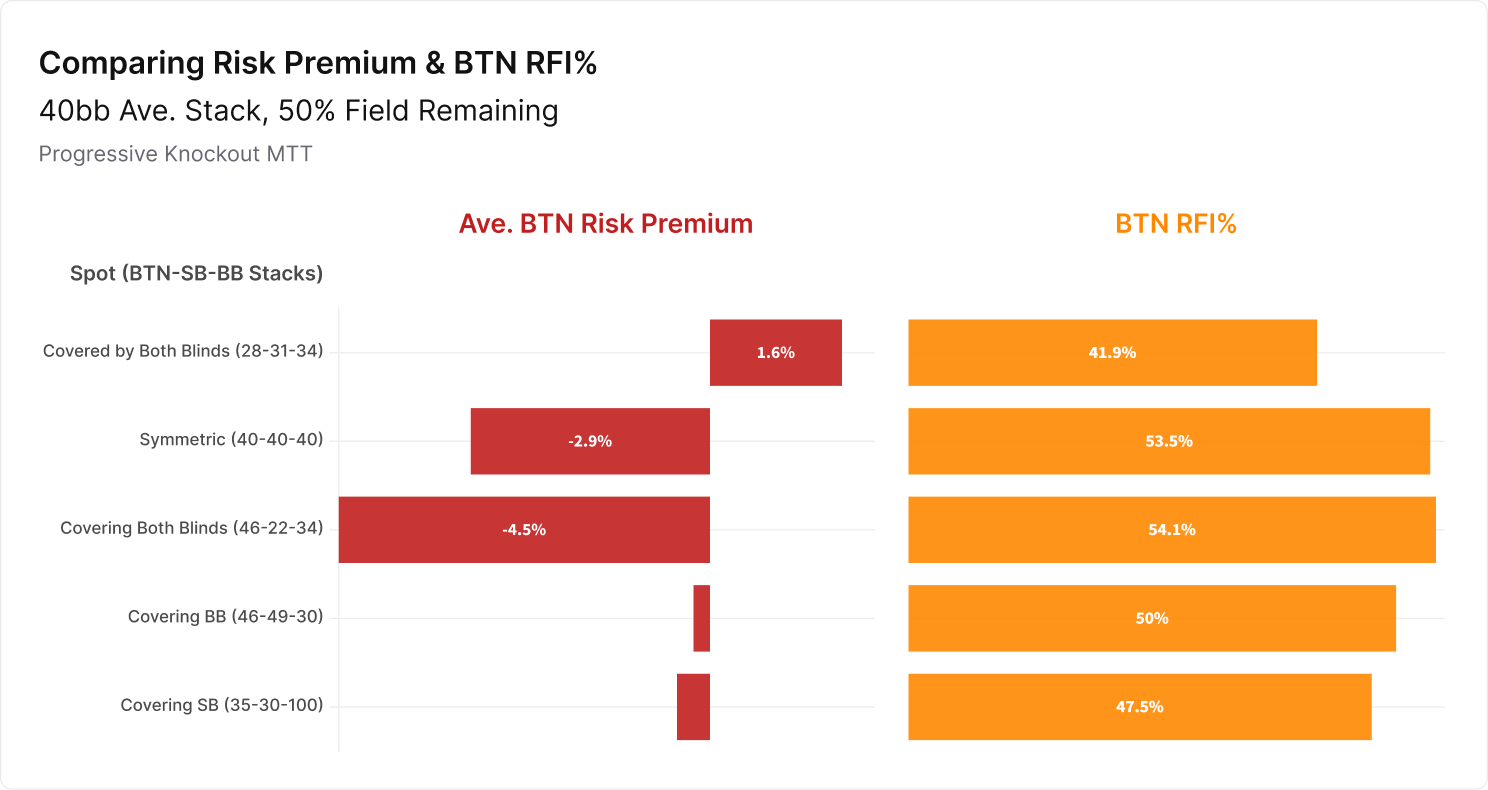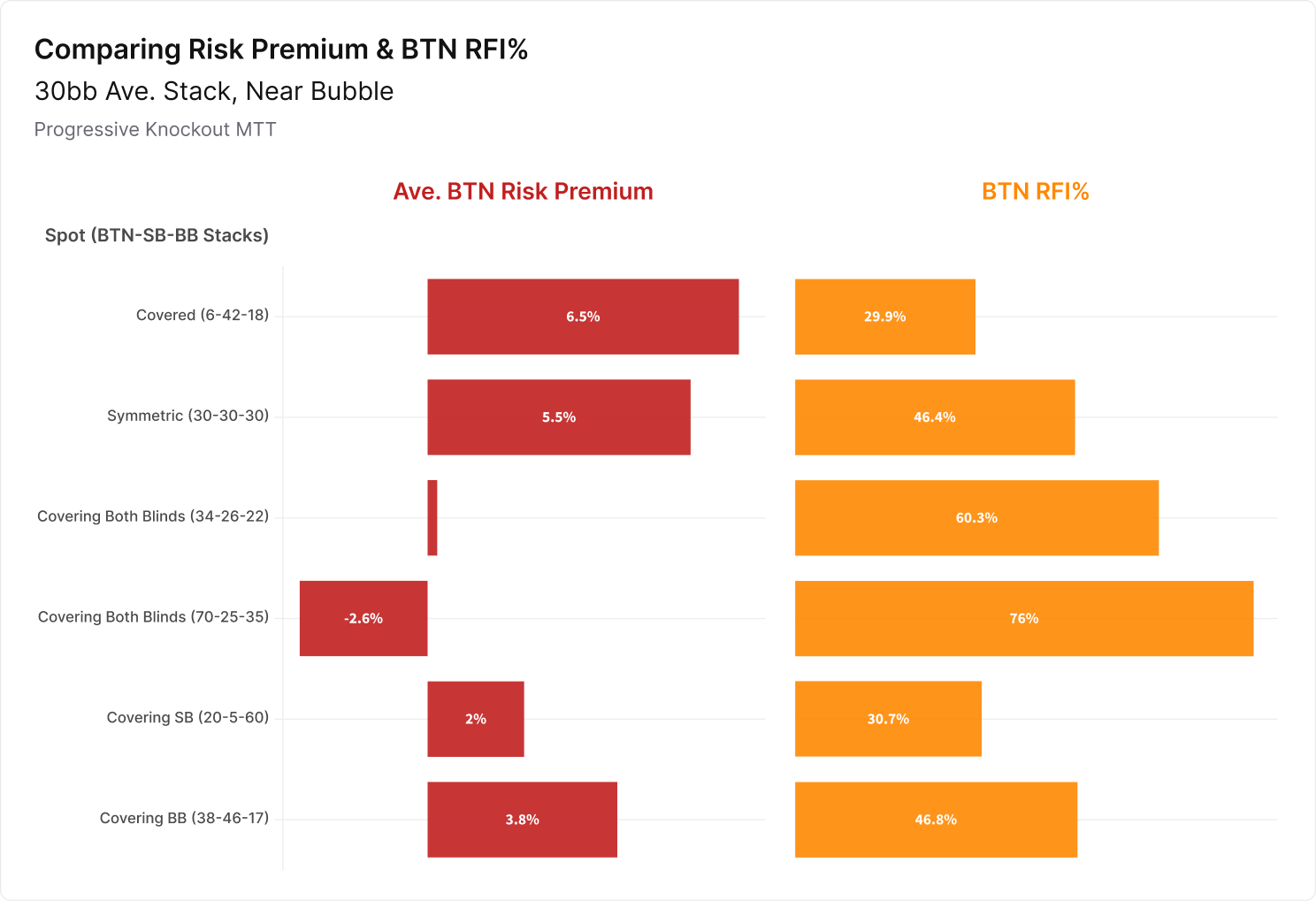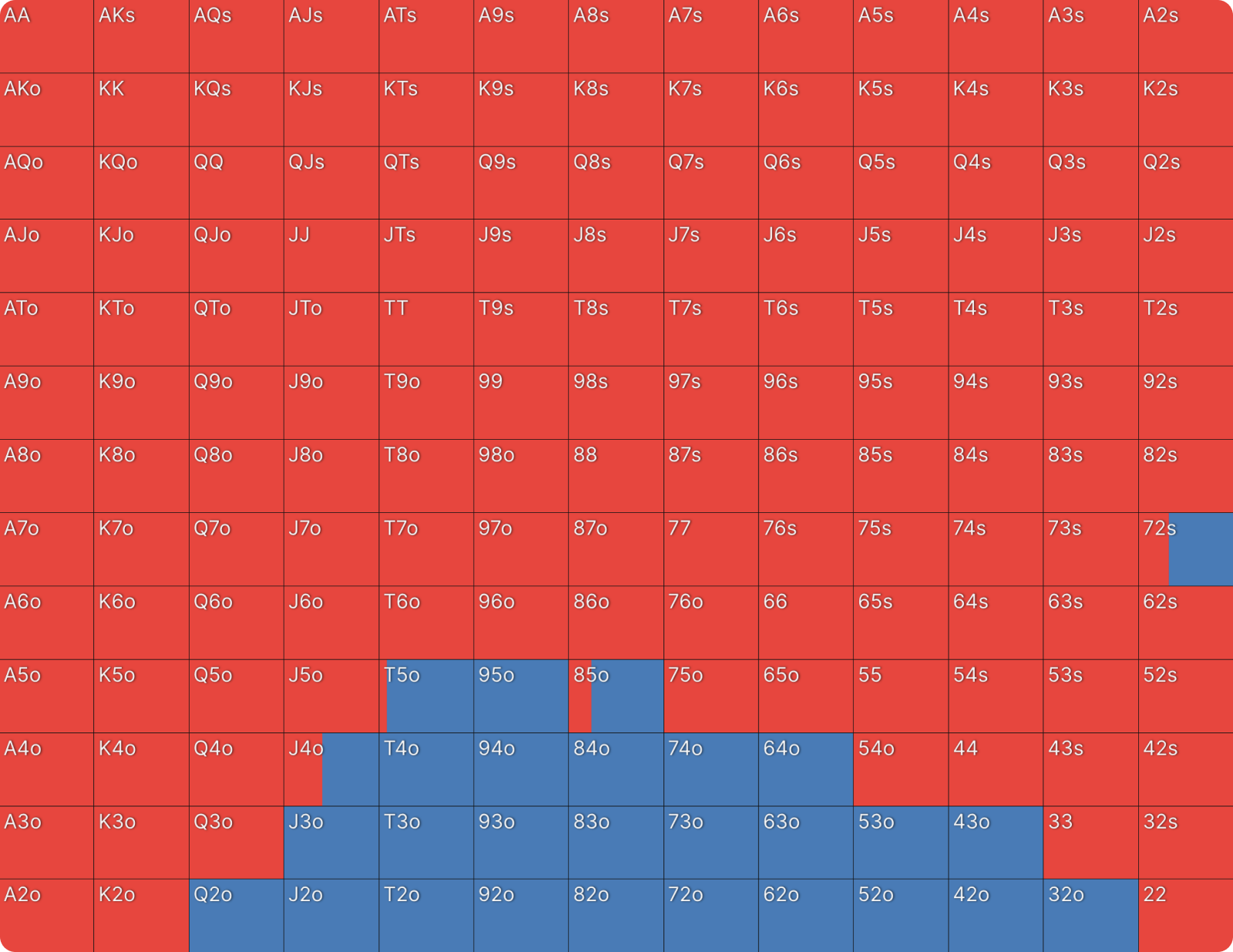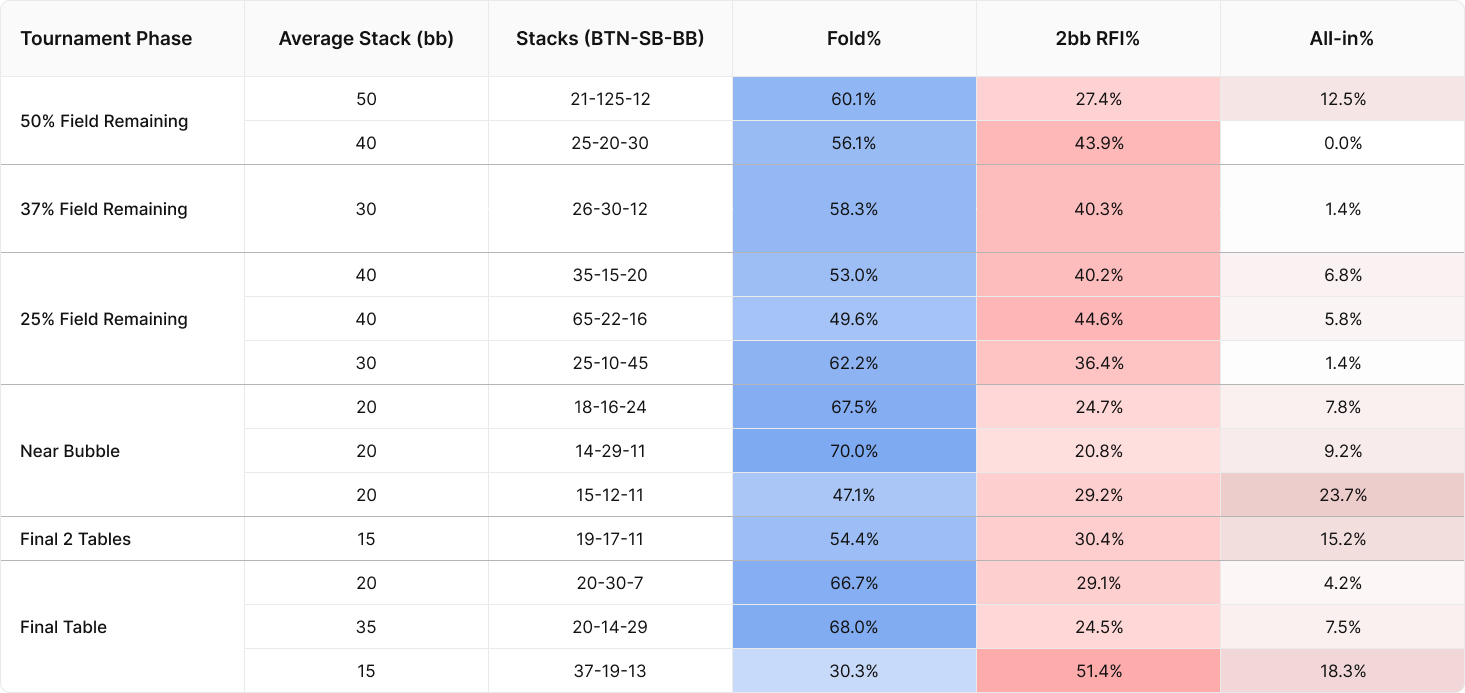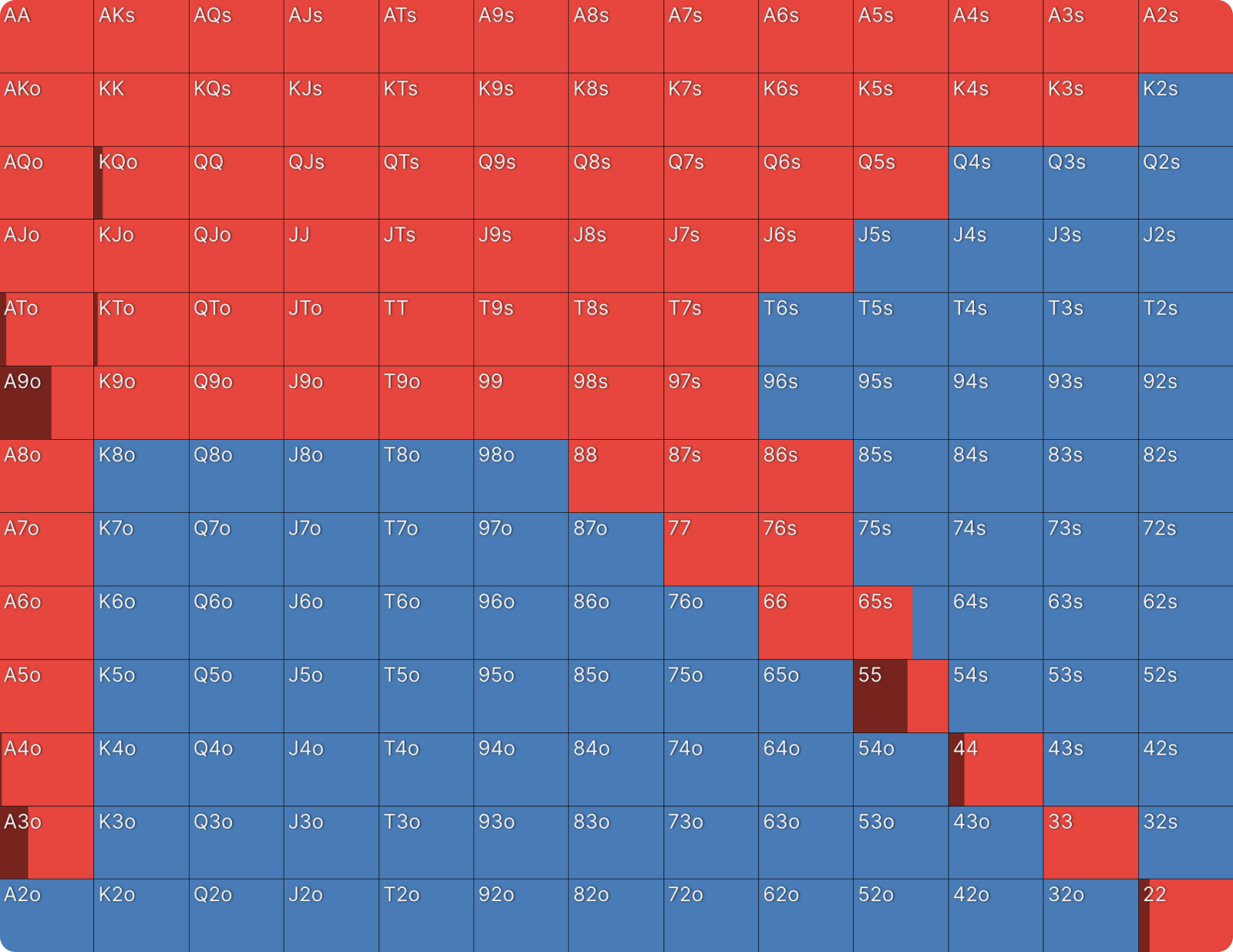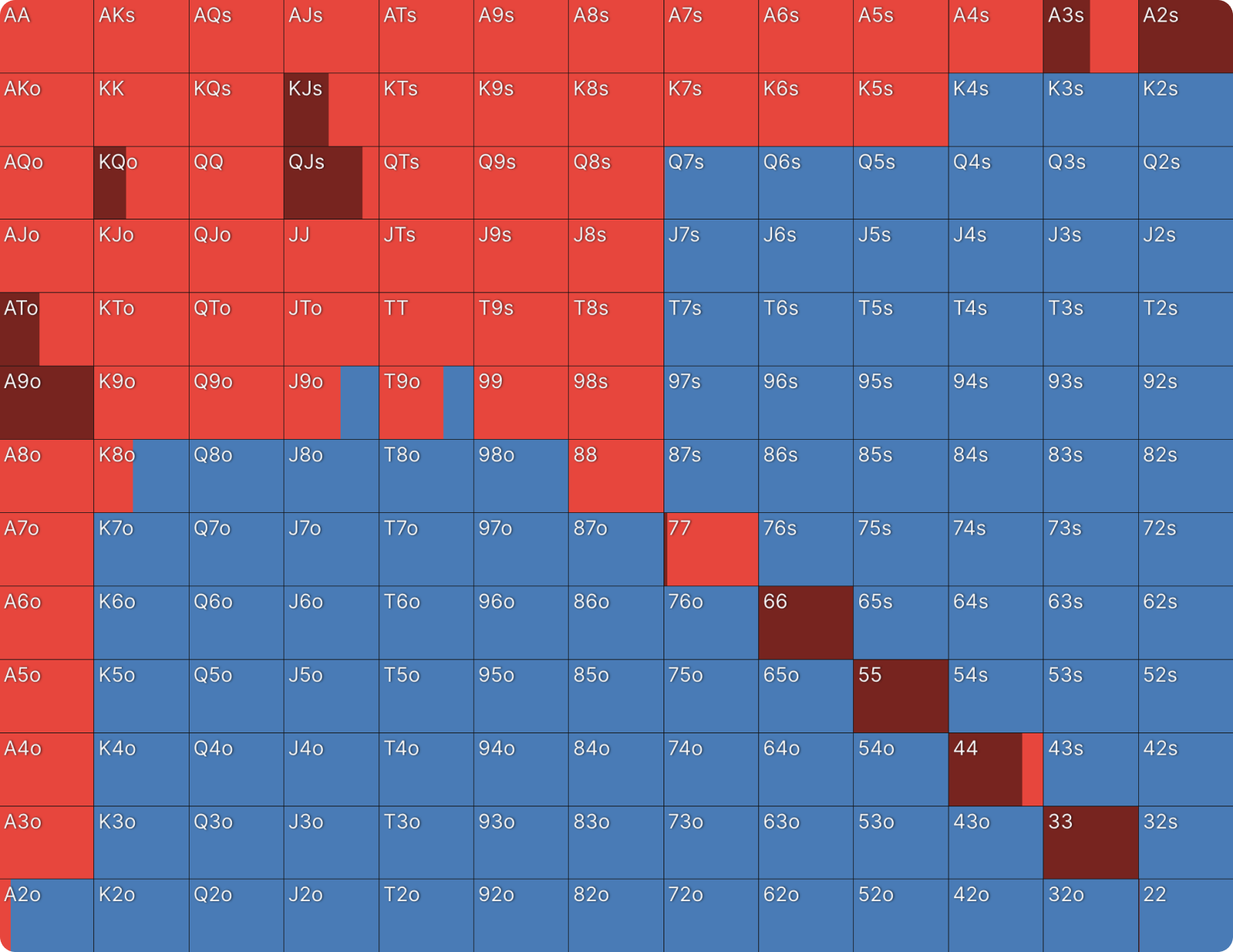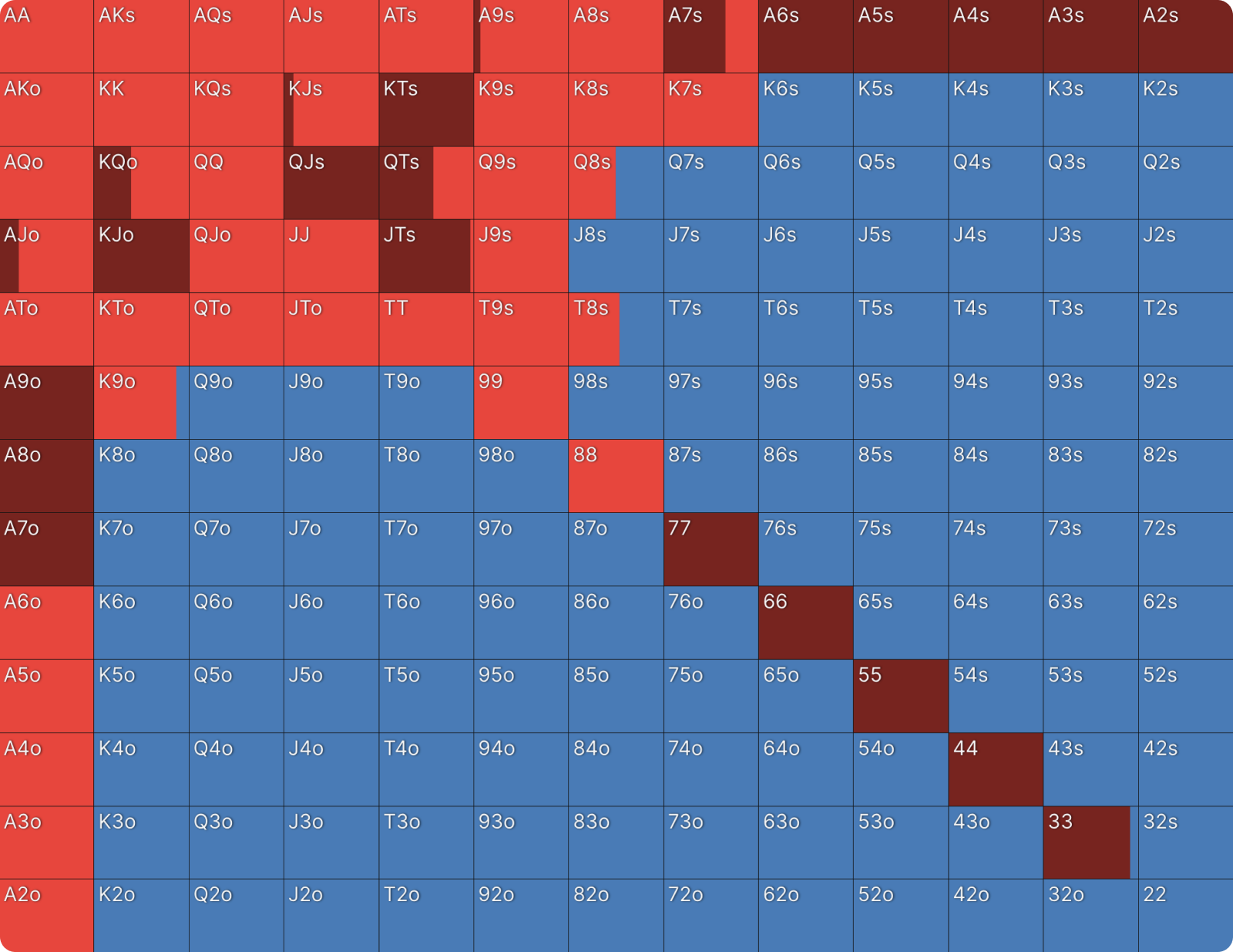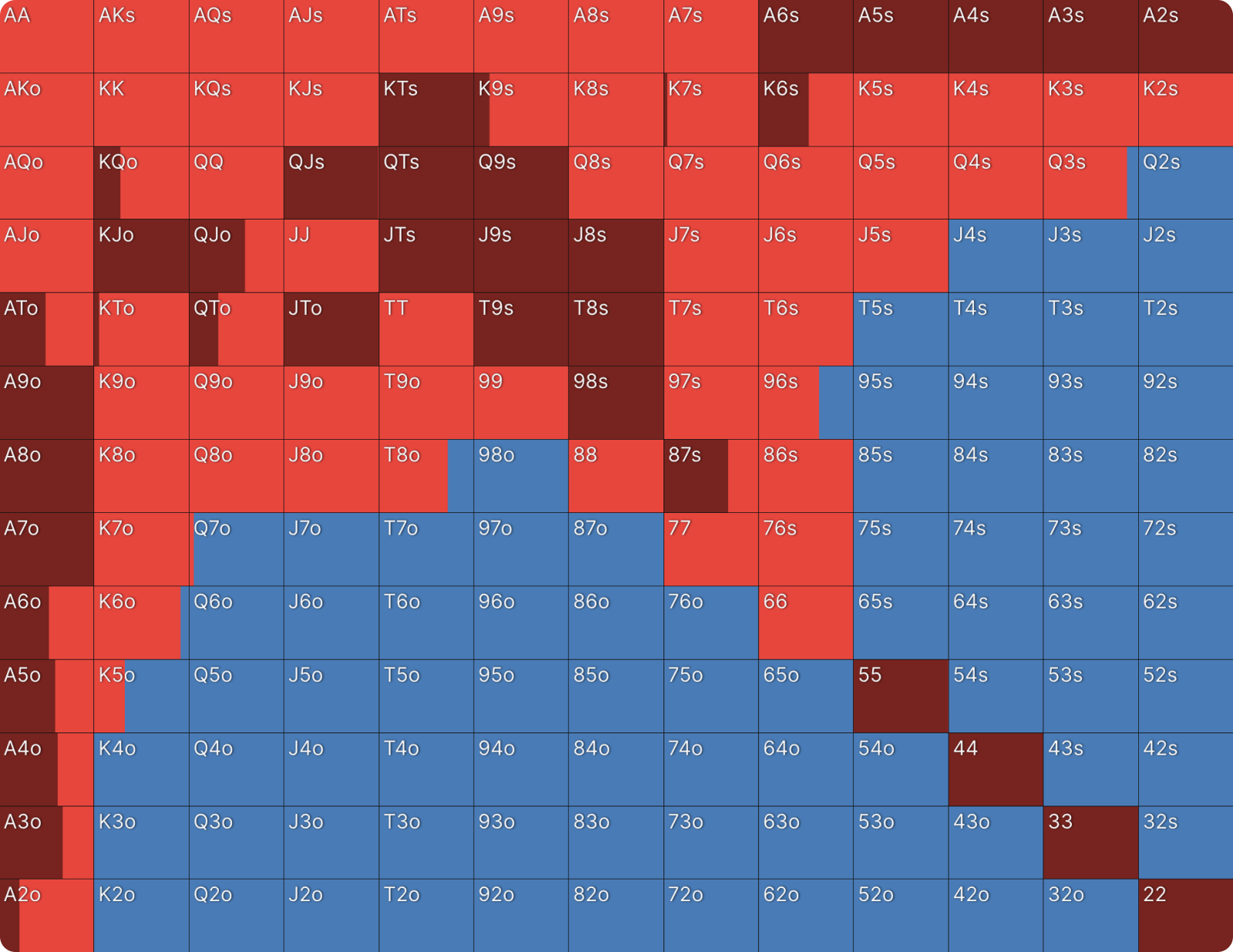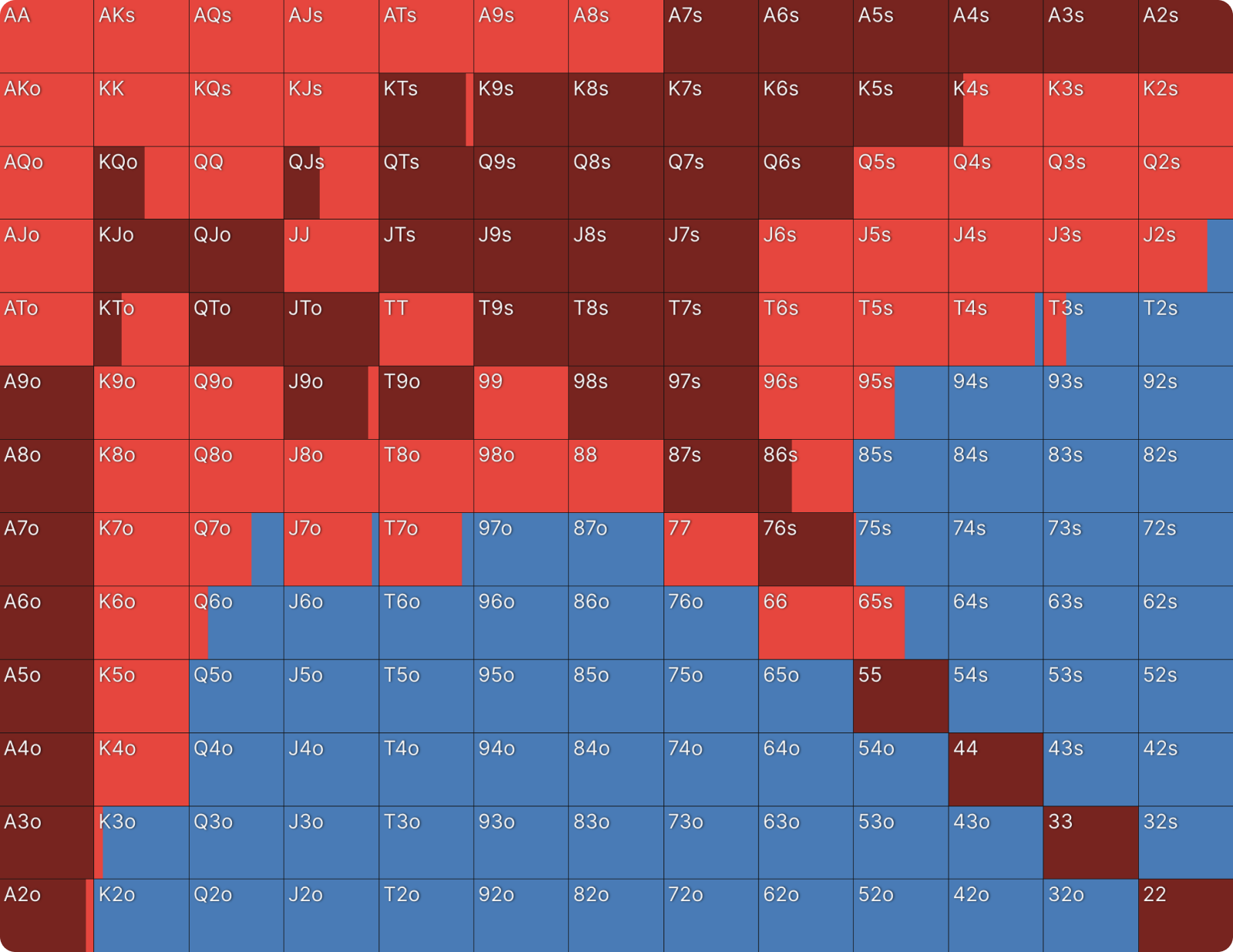Preflop Button Mastery in PKOs
Playing from the Button presents many unique opportunities in any tournament format, especially in PKOs. Apart from the benefit of always having position postflop, in Progressive Knockout Tournaments, we potentially have the opportunity to play our widest range for bounties against the Blinds. In this article, we’ll look at how covering others and being covered ourselves affects our preflop BTN ranges in a PKO.
RFI Range Comparisons
As a starting point, it’s essential to understand the impacts of tournament stage and relative stack sizes on our opening ranges. Both the risk premium of playing a hand, as well as the value of bounties, will impact how wide the optimal BTN opening range is.
Let’s start our examination by taking a sample of a few Button ranges at various average stack depths and tournament stages. Note that these examples are from 8-max solutions, so the full table averages 40bb rather than just these three positions. For our purposes, we have excluded these previous positions as we are discussing Button RFI ranges.
40bb Average, 50% Field Remaining
Check out these linked articles to learn more about Bubble Factor (BF) and Risk Premium (RP).
The following chart compares BTN’s risk premium (averaged against SB and BB) to their opening frequency:
We can immediately see some interesting trends for Button based on these examples:
- Play least amount of hands when covered by both Blinds relative to symmetric stacks. (Decrease in VPIPVPIP
An online poker acronym which stands for ‘voluntary put in pot’, a statistic that measures the frequency with which a player voluntarily put money into the pot pre-flop. of 11.6%) - Also play less hands when only covered by one of the Blinds compared to symmetric stacks. (Decrease in VPIP of 3.5–6%.)
- BTN’s range only slightly increases by 0.6% when covering both Blinds without being covered themselves (like in the symmetric scenario).
Based on these observations, we can see that:
In the early to middle stages of a tournament, being covered by opponents has a significantly greater impact on ranges than covering opponents, relative to symmetric stacks.
For comparison purposes, let’s look at how average stack depth and overall tournament stage impact our range. Below is a similar table to the one above, but with a 30bb average stack near the bubble when ICMICM
A commonly used acronym for the term independent chip model. ICM is a model that translates the value of a tournament chip to actual cash value, better known as tournament equity. ICM calculations are based on the stacks and payouts of all players remaining in the tournament. pressure is high.
30bb Average, Near Bubble
When we compare these spots to the previous examples, we can see that:
- The overall symmetric opening range when we’re shorter stacked and closer to the bubble decreases by 7.1%. While it’s intuitive that we play fewer hands close to the bubble, it’s worth noting how significant this impact is in a PKO.
- Because of this, we see less of a change when the Button goes from equal stacks to covered as we’re playing fewer hands to begin with.
- The Button now plays significantly more hands when covering both the Blinds, with their range expanding as their chip lead increases.
- The Button still plays significantly more hands even when only covering the Big Blind and not the Small Blind, as opposed to the inverted scenario (covering SB but not BB).
The key takeaway from these two datasets is that:
In PKO tournaments, the BTN’s opening range is mainly influenced by your risk advantage. Covering both blinds lets you target bounties and apply ICM pressure.
For reference, this is what a 76% RFI range looks like:
Adding All-ins Into RFI Ranges
Now that we’ve seen some examples of our opening ranges throughout a PKO tournament from the Button, let’s find out when we can consider shoving. Again, we’ll compare similar tournament stages and stack sizes.
All-in Frequencies
The following interactive chart shows how your strategy changes with stack depth. You can filter the tournament phase:
Looking at these solutions, we can see:
- Except for the first “50% field remaining” example, the Button only uses an all-in open size when they or one of the Blinds has a stack at or below 20bb.
- When the Button has over 20bb and is covered by one or more players, they have little to no shoving unless they have a significantly below-average chip stack.
- When all three positions are close in chips, the Button shoves the most when the Blinds face a high risk premium and are both covered.
All-in Ranges
Now that we’ve seen the frequencies for all-ins, let’s look at how to build our all-in ranges. Below are three examples of the specific portion of our range that expands as we increase our all-in frequency:
1-10% All-in Ranges
We can see that our all-in range begins with A9o and 55, and expands to include suited wheel aces, 33–77, some suited Ten-x, and additional middling Ace-x.
10%+ All-in Ranges
As we expand our range further, we see more of our offsuit Ace-x added in, as well as our lowest pairs and wheel acesWheel ace
Any hole cards that can make a wheel straight. A2, A3, A4, or A5.. At our widest (covering both Blinds near the bubble), we see a number of suited hands added in, as well as some offsuit connectors. It’s important to note most of our strongest hands prefer to open non-all-in because we want to keep our opponents in with a relatively wide range when we’re ahead. Hands that are not quite as strong are served by going all-in because they want to maximize their equity realization (enticed additionally by the potential of unlocking a bounty).
Summary
Playing from the Button presents the most opportunity in a PKO but requires some finesse in determining when to expand our range versus when to tighten it up. And when to use all-ins and how to construct that range. We have seen that due to the impact of stack sizes in a PKO:
- In the early to middle stages of a tournament, being covered by your opponents has a significantly greater impact on ranges than covering your opponents.
- Chip advantages have more leverage in high RP spots, particularly when the Button has a significant chip lead.
- The Button only uses an all-in open size when they or one of the Blinds has a stack at or below 20bb.
- All-in ranges expand as risk premiums increase when we have both Blinds covered.

Author
JonnyLaw
John Lawford AKA “JonnyLaw” is a mid stakes online MTT regular with a passion for the Progressive Knockout format.


